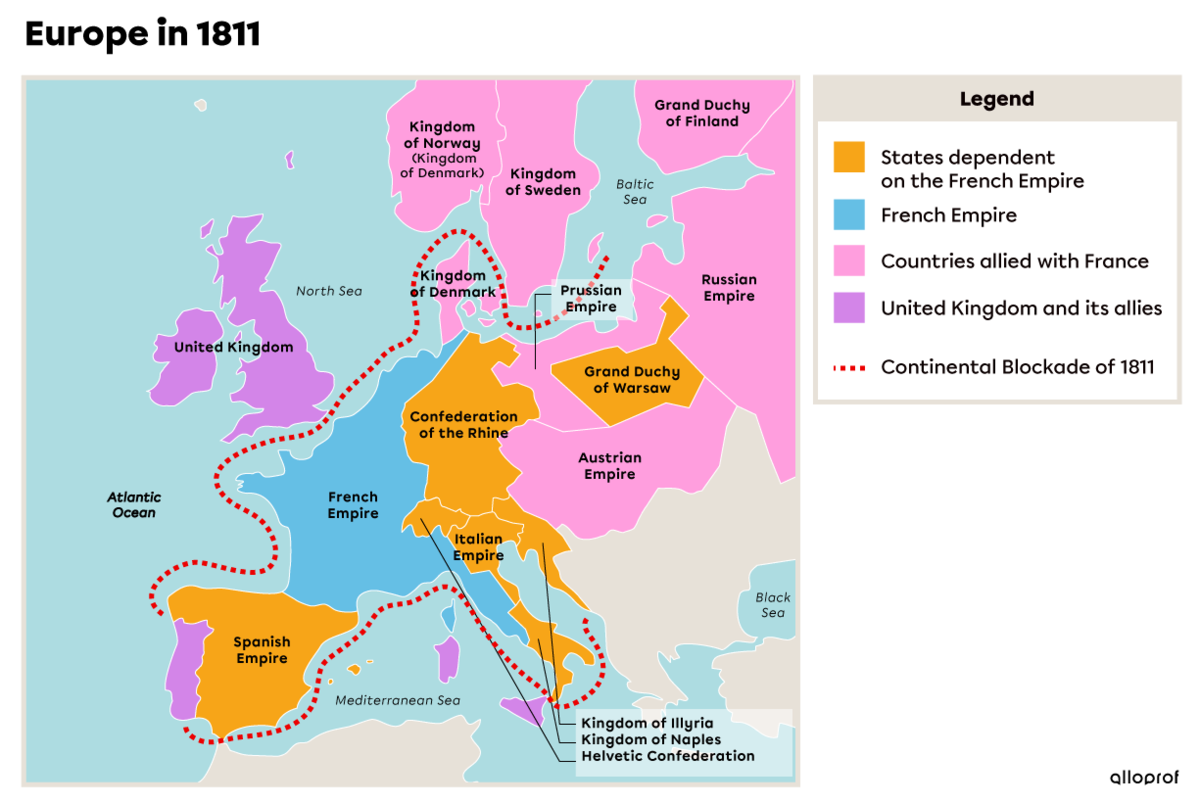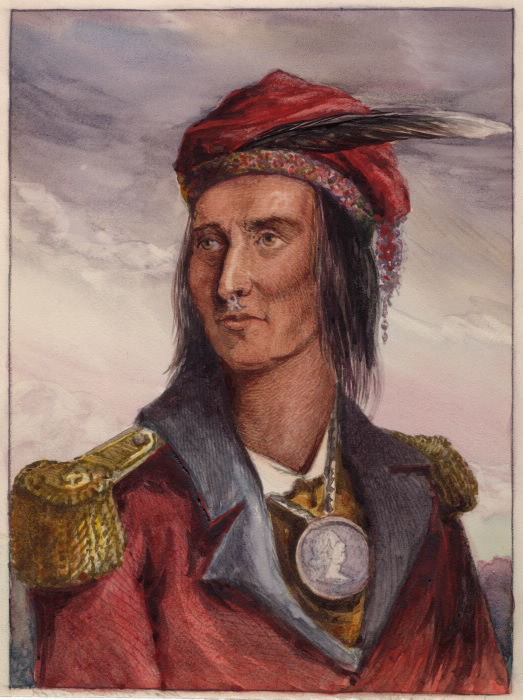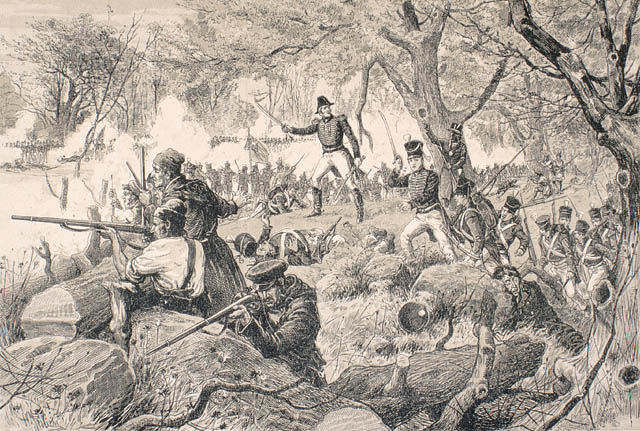The 19th century began with war between France and the United Kingdom. In 1806, Napoleon I, Emperor of France, imposed a continental blockade with the goal of weakening the United Kingdom’s economy and military. The United Kingdom retaliated by setting up a naval blockade. French ships on their way to and from Europe were blocked.
A blockade is the act of cutting off a territory (city, country, region) from its contacts (trade, supplies, etc.) with the outside world.
In this case, Napoleon’s continental blockade prevented the United Kingdom from trading with Europe, while the United Kingdom’s naval blockade prevented Napoleon and his allies from sailing across the Atlantic Ocean.

Source: Archives Larousse, n.d.
At that time, the United States traded heavily with France, and Americans were infuriated with the United Kingdom’s decision to block the passage of multiple ships bound for Europe.
For this and other reasons, the United States declared war on the United Kingdom in 1812. Because the Americans had no navy, they decided to attack the neighbouring British colonies of Upper Canada and Lower Canada.
Long before the War of 1812 broke out, Indigenous territories were already under threat by the American conquest of the West. For this reason and others, Tecumseh, Chief of the Shawnee Nation, worked to convince several Indigenous nations to join together to defend themselves against the United States in the event of a confrontation. The British were also afraid of the Americans invading their territory and needed help defending themselves. They wanted to join forces with the Indigenous people to fight their common enemy. The British government hired Indian agents to act as intermediaries between the Whites and the Indigenous people. They encouraged the Indigenous people to side with the British in North American wars, which the western Indigenous peoples did in the War of 1812.
The support of these thousands of Indigenous people was instrumental in securing several British victories during the British-American War, and the British considered Tecumseh a war hero. In 1813, Tecumseh was killed in battle. Following his death, some nations continued to fight alongside the British, but others left British territory or made peace with the United States.
After the War of 1812, allying with Indigenous peoples became less important for the British. The fur trade was in decline, and Indigenous peoples occupied land that was sought-after by settlers and timber traders. British authorities believed that the assimilation of Indigenous peoples was inevitable, so, from then on, Indian agents focused on enforcing various policies aimed at assimilating Indigenous peoples rather than creating alliances.

He was the Chief of the Chaouanons (Shawnees). He successfully united different Indigenous nations to support the British in the war against the United States in order to protect their lands that were sought after by the United States. Tecumseh was killed at the Battle of Moraviantown.
Source: Portrait of Tecumtha (circa 1808) [Canvas], Lossing, Benson, J., circa 1915, Toronto public library, (URL).
French Canadians were less inclined to support the United Kingdom in this conflict than English Canadians, who generally felt more of an attachment to the mother country.
Fortunately for the mother country, the United Kingdom had the support of the Catholic Church. Bishop Plessis, with help from parish priests, encouraged French Canadians to remain loyal to the United Kingdom. The Canadian elite, including the Parti canadien, also sided with the British to defend their territory.
All in all, a large number of French Canadians became involved in the British-American War. Although a few hundred volunteers formed a special unit called the Voltigeurs, most enlisted French Canadians were conscripts.
Conscripts are soldiers forced by the government to enlist in the army. This is called “conscription.”
Battles fought in Lower Canada were few and far between. However, when the Americans tried to invade the territory in 1813, the Battle of Châteauguay erupted. Despite being outnumbered ten to one, the Canadiens successfully pushed back the American troops, who had intended to take Montreal.

Source: Bataille de Châteauguay, 1813 [Lithography], Julien, H., before 1884, Library and Archives Canada, (URL).
Napoleon’s blockade ended in April 1814 along with the Napoleonic Wars. At last, the British and their allies could send reinforcements to fight the Americans in North America. They took Washington and burned down the White House a few months later.
Overall, this conflict had no clear winner or loser. Because of this, the United Kingdom and the United States decided to negotiate an end to the conflict. They signed a peace treaty in December 1814. All conquered territories were returned to the people who held them before the war. While the United States and the United Kingdom emerged more or less unscathed, ultimately, it was Indigenous peoples who experienced the negative fallout of the war, despite their strong support for the British. During the peace negotiations with the United States, the British abandoned their plan to create a territory reserved for Indigenous peoples because the United States representatives were strongly against it. Indigenous peoples were in danger of losing their territory because the Americans sought to conquer the western United States.
The peace treaty was signed in December 1814, but some fighting continued until February 1815. This is because it took time for news of a peace treaty signed in Europe to reach the troops fighting on American soil.
Archives Larousse. (n.d.). L’Europe napoléonienne [Geographic map]. Larousse. https://www.larousse.fr/encyclopedie/images/LEurope_napol%C3%A9onienne/1011228
Julien, H. (Before 1884). Bataille de Châteauguay, 1813 [Lithography]. Library and Archives Canada. https://www.bac-lac.gc.ca/fra/recherchecollection/Pages/notice.aspx?app=fonandcol&IdNumber=2895961&new=-8585745521535060765
Lossing, Benson, J. (vers 1915). Portrait of Tecumtha (c. 1808) [Canvas]. Toronto public library. https://www.torontopubliclibrary.ca/detail.jsp?Entt=RDMDC-JRR3358&R=DC-JRR3358